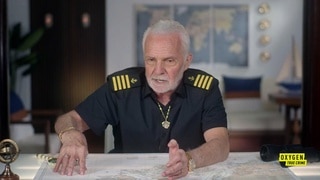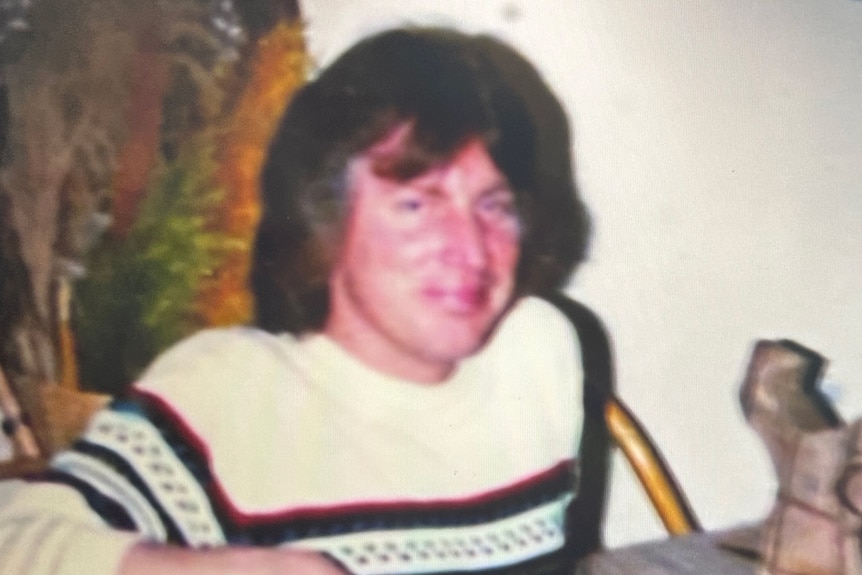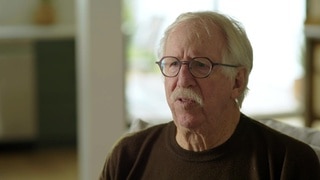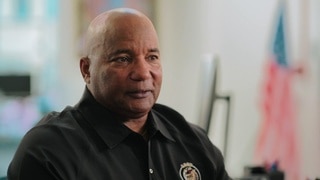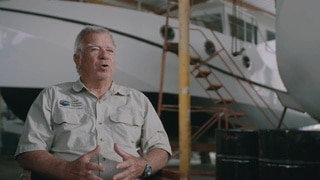Create a free profile to get unlimited access to exclusive videos, breaking news, sweepstakes, and more!
Murdered Disc Jockey Found Dead Near Catalina Island Leads to Montana Manhunt
Missing fingers helped Los Angeles County investigators identify a John Doe shooting victim as Steven Williams.
Barnacles, G.P.S. navigation, and the observance skills of a former police officer in Montana would help interstate authorities hone in on a sailor wanted for murder.
It began off the shores of Catalina Island, about 22 miles west of Los Angeles in the Pacific Ocean, an idyllic setting that offers “a whole different world” for those wanting to get away, according to journalist Tricia Takasugi, formerly of Fox L.A. affiliate KTTV. Even the host of Deadly Waters with Captain Lee, Captain Lee Rosbach, agreed that while the resort town was a mariner’s and beachgoer’s paradise, “grisly secrets can wash up,” as stated on Deadly Waters.
The discovery of John Doe on Catalina Island
On Thursday, May 18, 2006, a pleasure boater spotted heavy seagull activity about six miles east of the island in the well-traveled channel between Catalina and the mainland, or what now-retired Los Angeles County Sheriff’s Department (L.A.S.D.) Sergeant Kenneth Clark referred to as “wide open territory.” The boater recognized the birds were focused on the floating body of a “totally unrecognizable” male in advanced stages of decomposition.
Clark believed the John Doe, who was fully dressed and wearing gloves, could have been a worker who fell to his death, as the channel acted as some of the nation’s busiest international shipping lanes.
But a postmortem examination by the Los Angeles County Medical Examiner’s Office determined that the unidentified man died of a gunshot wound, one that couldn’t have been self-inflicted. Authorities also discovered the victim had three fingers surgically removed from his body before the time of the murder, which they hoped would bring them closer to making an identification.
For more in true crime:
Days After Getting Married, Man Dies in Wife's Arms While Defending Her from Serial Killer Intruder
16-Year-Old Dancer Found Stabbed to Death in Her Own Home: "Hug Your Children"
"Desperately Searching" Families Plead for Answers on Dateline: Missing in America Season 3
Furthermore, barnacles discovered on the man’s “high-end shoes” pointed investigators in a new direction because the sea life could have indicated where and when the body entered the water.
According to Deputy District Attorney John McKinney for Los Angeles County, experts identified the barnacles as gooseneck barnacles, which only inhabited the west side of Catalina Island, opposite where the body was discovered. The sizes of the barnacles also helped investigators learn he’d been in the ocean for approximately 15 days.
John Doe is identified as Steven Williams
On May 24, 2006, a concerned individual from San Pedro, California, about 20 miles south of downtown Los Angeles, reported that they hadn’t seen their friend, 59-year-old Steven Williams. Supporting the possibility that Williams could have been John Doe, the caller noted that Williams was missing three fingers due to a woodworking accident during middle school.
Experts later confirmed the match.
“It was very much a shock,” Williams’ cousin, Dan Webster, told Deadly Waters. “I mean, how did Steven all of a sudden end up dead, floating in the Catalina channel?”
According to loved ones, Williams had a ‘terrific on-the-air voice,” which made him perfect as a disc jockey for a popular morning radio show in Colorado. He D.J.’d on. Steven B. and the Hawk in the Morning for Denver’s KPKE.
“Steven was good-looking, and he had a very bubbly personality,” said Webster.
But Williams was laid off from the station, and instead of returning to radio, he made a go of it by enrolling in culinary school and focusing on food and wine pairings. Then, in 2001, Williams’ father became terminally ill in California, prompting the son to move to Corona del Mar in Newport Beach, about 40 miles south of L.A.
About two years later, Williams’ father passed away, leaving the son with an inheritance of approximately $2 million. But friends said he was “overwhelmed” by his new financial status, according to journalist Takasugi, and investigators wondered if it could have been a motive for murder.
The investigation leads to Harvey Morrow
Those close to Williams said he could not manage the money successfully and even allegedly failed to pay years of taxes. He reportedly had to take loans from friends and ultimately found himself with little to no money at all.
“In September of 2003, he was visited by an old friend, and he brought Harvey Morrow with him,” McKinney told Deadly Waters. “Harvey noticed that the house was in quite a disarray. He saw a lot of unopened mail on the table, he saw a lot of bills, and during his conversation with Steven that day, he learned that Steven was in over his head.”
Morrow presented himself as a Wall Street financial advisor and offered to help his new friend. Over time, Morrow introduced Williams to some of the finer things in life, including Morrow’s Iolair Mara, a 75-foot luxury sailboat docked in San Pedro.
According to McKinney, the boat “started to undergo rapid repairs” soon after Williams handed over control of his father’s estate over to Morrow. Flatscreen televisions and teak decking were just some of the “complete refurbishments” and “immaculate retouches” that took place, with promises by Morrow that he’d take Williams on as a gourmet chef when he set sail across the globe in a couple of years’ time.
Williams even moved onto the boat two months after meeting Morrow.
But by 2005, Williams’ inheritance had dried up, though he told friends that Morrow squirreled some funds away in offshore accounts, which Morrow said they’d pick up once they set sail. Friends claimed Williams planned to confront Morrow about the missing money just before he disappeared.
“The red flags were up that something was wrong,” said L.A.S.D.’s Sgt. Clark.
The last known movements of Williams and Morrow
On May 25, 2006, a week after Williams was found dead in the water, investigators searched the San Pedro-docked sailboat. They found little beside an instruction manual belonging to a handheld G.P.S. system nowhere to be seen. A ledger onboard also detailed how Morrow put more than $2 million into customizing the Iolair Mara.
Cell phone records later proved that on the afternoon of May 4, two weeks before Williams was found, Williams and Morrow called one another on several occasions. Although Morrow reportedly phoned Williams dozens of times in the weeks leading up to the murder, the calls abruptly stopped after Morrow's phone left Catalina Island.
It was enough for law enforcement to obtain an arrest warrant for Harvey Morrow.
“I can’t even express the anger I felt,” Williams’ friend, Leslie Gould, told Deadly Waters. “I wanted that guy caught because he took a very dear friend.”
Authorities published Morrow’s photo in the media, but he was gone in the wind, and the case had little significant movement for months.
The search for the murder suspect in Steven Williams Case
On September 11, 2006 — three months and 23 days into the investigation — the L.A.S.D. received word from law enforcement in Cascade County, Montana, that they possibly had information on Harvey Morrow, according to Sgt. Clark. It was the opposite of what California investigators pictured: Morrow living it up on the high seas.
Joe Parsetich, a Great Falls-based car dealership manager and former police officer, called Montana authorities to report his suspicions about a new employee, Harvey Morrow. Morrow told Parsetich that he had a background in stockbroking and owned “a very beautiful home” on the Gulf of Mexico.
The auto sales manager wondered why someone would leave the shores of the Gulf for Montana, and Morrow reportedly said he wanted to avoid “large bodies of water” after his wife and her friends died in a storm that caused their yacht to capsize.
“Well, I know enough about the Gulf that it didn’t make a lot of sense,” Parsetich told Deadly Waters. “I guess you can say, ‘Once a cop, always a cop,’ because my instinct’s saying, ‘Something’s not right.’”
Parsetich’s hunches proved correct because when he Googled Harvey Morrow, he found he was wanted in Los Angeles County for the murder of Steven Williams.
With the assistance of the U.S. Marshals Service, California authorities proceeded with caution for fears that Morrow would get spooked and travel just one and a half hours north over the Canadian border.
On Sept. 20, 2006, authorities successfully arrested their suspect at the used car dealership with the cooperation of Parsetich and the employees. He was later extradited to Los Angeles to face murder charges.
“Real justice” is served for Steven Williams
In what was a primarily circumstantial case against Morrow, investigators caught the break they so needed in February 2007, 11 months after Steven Williams was killed and dumped into the ocean.
“I get a call from the Commodore of the Los Angeles Yacht Club, and he said, ‘I found a handheld G.P.S. in one of my cabinets inside the yacht club,’" Sgt. Clark told Deadly Waters.
Lo and behold, it was the same G.P.S. to which the confiscated manual from the Iolair Mara belonged. Data from the device proved that on May 4, 2006, the sailboat traveled from Morrow’s San Pedro marina slip to Catalina Island, traveling to the backend of the island — the only place inhabited by gooseneck barnacles.
“It meanders there for a while, and it comes racing back to its slip,” according to Dep. D.A. McKinney.
The timing of the route aligned with the data taken from Morrow and Williams’ cell phones.
Investigators believed the pair traveled to the western part of the island before getting into a confrontation over Williams’ mismanaged funds. According to McKinney, Morrow drew a gun and shot Williams in the back of the head before dropping his body in the water.
The body would have traveled to the open sea, but due to rotating coastal eddies exclusive to southern California, it traveled to the east side of the island for boaters to find.
In November 2011, after years of delays and a mistrial, a jury eventually found Harvey Morrow guilty of first-degree murder. He was sentenced to life behind bars without the possibility of parole.
“Harvey was somebody who liked the open spaces and the freedom,” Webster told Deadly Waters. “So, to me, spending the rest of your life in a jail cell is real justice. I’d much prefer that to the death penalty.”
Catch up on the premiere season of Deadly Waters with Captain Lee on Oxygen.

